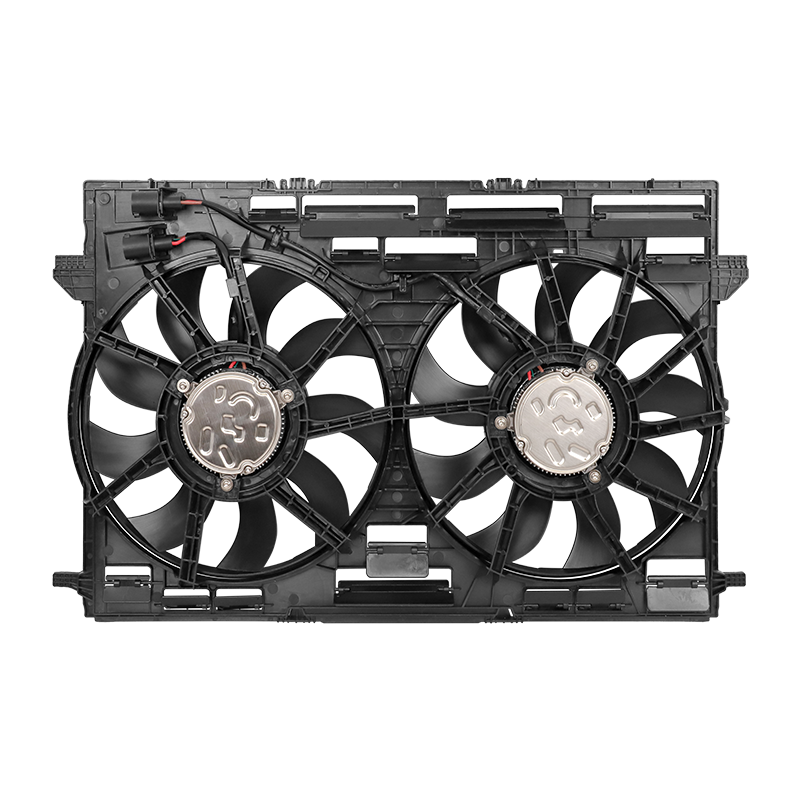2025-07-03
The HVAC auto engine cooling fan is a critical component in your vehicle’s cooling system. It helps regulate the engine temperature by drawing air through the radiator to dissipate heat. When this fan starts making a loud noise, it can be alarming and indicate an underlying issue that needs prompt attention. Ignoring the problem can lead to overheating, engine damage, and costly repairs. This article will guide you through understanding why the cooling fan might be noisy and the steps you should take to address the issue effectively.
1. Identify the Type of Noise
The first step in diagnosing the problem is to identify the nature of the noise. Different sounds can indicate different problems:
Grinding noise: This often points to worn-out bearings in the fan motor or debris caught in the fan blades.
Squealing or whining: Usually caused by a loose or worn belt driving the fan or issues with the fan motor.
Rattling or banging: Could indicate loose fan blades, broken components, or debris hitting the fan.
Humming or buzzing: Sometimes caused by electrical issues or the fan motor struggling to operate efficiently.
By noting the exact sound, you can better understand what might be wrong.
2. Inspect the Cooling Fan Visually
Before jumping into repairs, perform a visual inspection:
Turn off the engine and ensure the fan has stopped spinning.
Check for any visible debris like leaves, sticks, or trash caught in the fan blades or housing.
Look for any visible damage to the fan blades such as cracks, bends, or chips.
Check for loose or missing bolts and screws that secure the fan assembly.
Inspect the belt (if applicable) for signs of wear, cracking, or looseness.
Sometimes, simply clearing debris or tightening loose components can resolve the noise issue.
3. Test the Fan Operation
With the engine running (be cautious and keep hands clear of the fan):
Observe if the fan engages when the engine reaches operating temperature.
Listen to the noise closely to pinpoint if it comes from the fan or elsewhere.
Note if the fan speed fluctuates abnormally or if the noise worsens at certain speeds.
If the fan fails to start or runs erratically, there could be an electrical or mechanical fault.
4. Check the Electrical Connections
The cooling fan is usually powered by an electric motor controlled by the vehicle’s HVAC system or engine control unit (ECU). Faulty wiring or poor connections can cause the motor to work harder, creating noise:
Inspect wiring harnesses and connectors for corrosion, loose contacts, or damaged wires.
Test the fan relay and fuse to ensure they are functioning properly.
Use a multimeter to check for proper voltage reaching the fan motor.
If you’re unfamiliar with automotive electrical systems, it’s best to have a professional mechanic perform this step.
5. Consider Fan Motor Wear or Failure
Over time, the cooling fan motor bearings can wear out, causing grinding or whining noises. The motor itself can also develop internal faults that result in poor operation and noise:
Listen carefully to the motor housing to detect bearing noise.
If the fan motor is suspected to be the culprit, it might need lubrication or replacement.
In many cases, replacing the entire fan assembly with a new motor is the most reliable solution.
Attempting to repair the motor internally is usually not cost-effective.
6. Evaluate the Fan Clutch (If Applicable)
Some vehicles use a fan clutch that engages or disengages the cooling fan based on engine temperature. A failing fan clutch can cause noise, especially a loud rumbling or squealing sound:
Check if the fan clutch is operating smoothly without excessive play or resistance.
A worn or damaged fan clutch should be replaced to restore quiet and efficient operation.
Note that electric cooling fans do not use a clutch, so this step applies only to mechanically driven fans.
7. Maintain Proper Fan Belt Tension
In vehicles where the cooling fan is driven by a belt (such as a serpentine belt), improper tension or belt wear can cause noise:
Inspect the belt for cracks, glazing, or fraying.
Check the belt tension and adjust or replace it if necessary.
Replace worn belts promptly to prevent slipping and noise.

8. Avoid Delaying Repairs
A noisy cooling fan is not just an annoyance; it can signal serious problems that affect engine cooling. Delaying repairs may lead to:
Engine overheating, which can cause head gasket failure or warped engine components.
Increased electrical load, draining the battery or damaging the electrical system.
Complete failure of the cooling fan, resulting in costly breakdowns.
Promptly addressing noise issues protects your vehicle’s longevity and reliability.
9. When to Seek Professional Help
If after basic checks and cleaning the noise persists or you’re unsure about diagnosing the problem:
Visit a qualified mechanic or automotive technician.
Request a full cooling system inspection.
Have the fan motor, electrical system, and mechanical components tested.
Professionals have the tools and experience to pinpoint and fix the issue efficiently.
10. Preventive Measures to Avoid Noise
To reduce the chances of your HVAC auto engine cooling fan making loud noises in the future:
Regularly clean debris from the fan and radiator area.
Periodically inspect the fan blades and motor condition.
Ensure electrical connections remain clean and secure.
Replace worn belts and fan clutches promptly.
Follow your vehicle’s maintenance schedule for cooling system checks.
A loud noise from your HVAC auto engine cooling fan is a sign that something is wrong and should never be ignored. By carefully identifying the noise type, inspecting the fan and related components, checking electrical connections, and addressing motor or mechanical faults, you can fix the problem before it leads to more severe engine damage. Whether through your own inspection or professional help, timely action ensures your vehicle’s engine stays cool and runs smoothly.